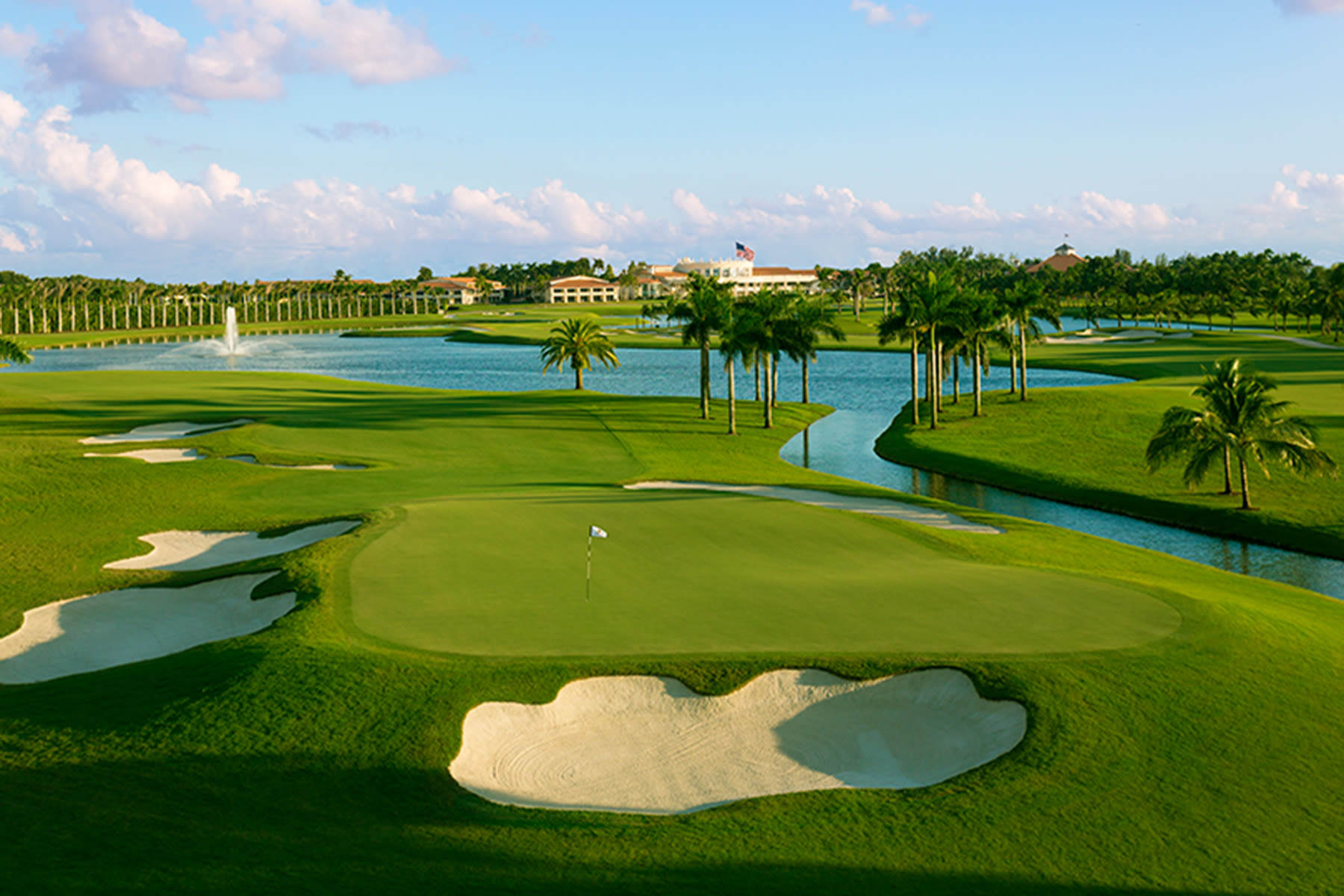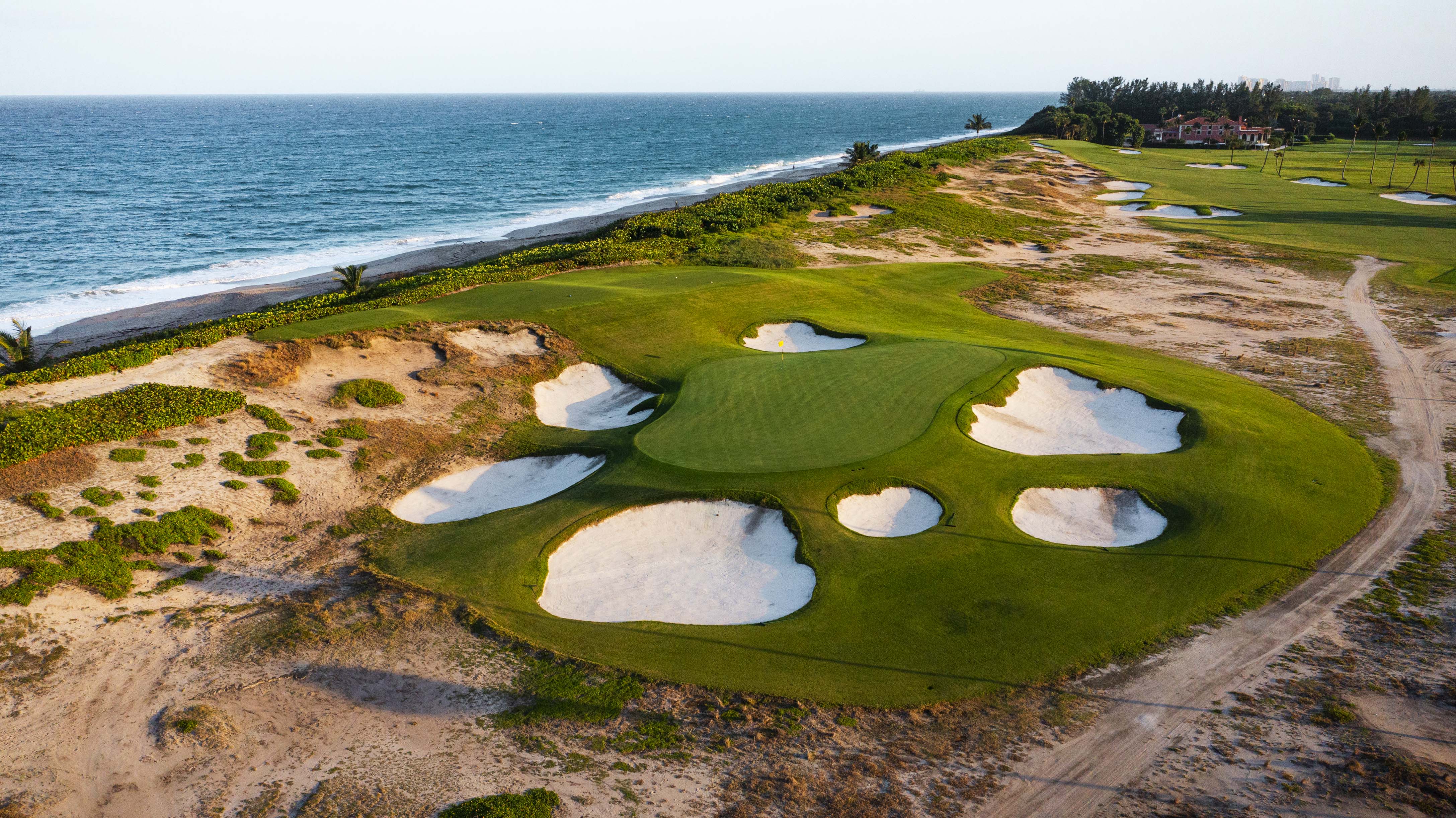How Many Golf Courses In Florida

Florida, the Sunshine State, is renowned for its stunning beaches, vibrant cities, and year-round pleasant climate. But did you know that Florida is also a haven for golf enthusiasts? With its picturesque landscapes and a rich golfing heritage, the state boasts an impressive array of golf courses that cater to players of all skill levels. In this captivating exploration, we delve into the question that often piques curiosity: How many golf courses are there in Florida?
Golf courses are not just recreational facilities; they are the heart and soul of the golfing community. From manicured fairways to challenging bunkers and pristine greens, each course offers a unique playing experience. Florida, with its diverse topography, boasts an assortment of courses, ranging from coastal links-style layouts to inland designs nestled amidst lush forests. Whether you seek championship-caliber challenges or a leisurely round in a tropical oasis, Florida’s golf courses have something to offer every golfer’s taste and preference.
In this article, we embark on a quest to uncover the magnitude of golf courses in Florida. We will explore the factors that contribute to the state’s golfing landscape, analyze estimation methodologies, delve into regional variations, and gain insights into the unique aspects of Florida’s golfing destinations. So, grab your clubs and join us as we tee off into the world of golf courses in the beautiful state of Florida.

Understanding Golf Courses in Florida
Golf courses hold a special place in Florida’s sports and recreational scene. They provide not only a challenging playing field but also an opportunity to bask in the state’s natural beauty. Let’s delve into the features and characteristics that make Florida’s golf courses so unique.
Course Design and Layout
Florida’s golf courses offer a diverse range of designs and layouts, showcasing the creativity of renowned golf course architects. From links-style courses hugging the coastlines to inland layouts nestled amidst picturesque forests, each course presents a distinct challenge and visual splendor. The layout of a golf course involves strategic placement of hazards, bunkers, water features, and undulating greens, creating an engaging and memorable experience for golfers of all skill levels.
Course Difficulty and Rating Systems
Florida’s golf courses cater to players with varying abilities, providing a wide range of difficulty levels. Course difficulty is assessed using various rating systems, such as the USGA Course Rating and Slope Rating. These systems evaluate factors such as course length, hole layouts, obstacles, and overall challenge to assign a numerical value that indicates the course’s relative difficulty.
Course Amenities and Facilities
In addition to their playing surfaces, Florida’s golf courses offer an array of amenities and facilities to enhance the overall golfing experience. Clubhouses provide a gathering place for golfers, offering amenities such as pro shops, locker rooms, restaurants, and event spaces. Many courses feature practice areas, including driving ranges, putting greens, and chipping areas, allowing golfers to refine their skills before hitting the fairways. Furthermore, golf resorts and residential communities often encompass world-class courses with additional amenities such as spas, fitness centers, and luxurious accommodations.
Factors Affecting the Count of Golf Courses in Florida
The total count of golf courses in Florida is influenced by various factors that shape the state’s golfing landscape. Understanding these factors provides valuable insights into the growth and distribution of golf courses throughout the region.
Golfing Culture and Tourism
Florida’s golfing culture and its status as a premier tourist destination contribute significantly to the count of golf courses. The state’s warm climate attracts golfers from around the world, making it an ideal location for golf-related businesses and investments. The combination of local golfing enthusiasm and tourism demand drives the development of new courses and the maintenance of existing ones.
Geographic and Environmental Factors
Florida’s geographical attributes, including its extensive coastline, varied terrain, and favorable weather conditions, create an ideal setting for golf courses. The state’s sandy soil and ample water resources allow for the construction and maintenance of quality playing surfaces. Additionally, the natural beauty of Florida’s landscapes, from coastal vistas to tropical flora, adds to the allure of golfing in the state.
Demographic and Population Trends
Population growth and demographic trends in Florida influence the demand for golf courses. The state’s increasing population, particularly among retirees and golf enthusiasts, fuels the need for more courses and golf-related amenities. Additionally, the development of golf course communities and residential complexes attracts residents seeking an active and golf-centric lifestyle.
Estimating the Total Count of Golf Courses in Florida
Estimating the exact count of golf courses in Florida is a complex task due to various factors such as course openings, closures, and changes in ownership. However, several methodologies and data sources can provide valuable insights into the approximate number of golf courses in the state.
Methodology and Data Sources
Estimating the count of golf courses in Florida involves a combination of primary and secondary data sources. These may include:
- Golf Association Reports: National and state-level golf associations, such as the United States Golf Association (USGA) and the Florida State Golf Association (FSGA), collect data on registered golf courses. Their reports offer a comprehensive overview of the golfing landscape, including course counts and other relevant statistics.
- Florida Department of Business and Professional Regulation: The Division of Hotels and Restaurants within the Florida Department of Business and Professional Regulation maintains records of licensed golf course facilities in the state. These records can provide insights into the number of officially recognized golf courses.
- Golf Course Directories and Online Resources: Online platforms, golf course directories, and golfing websites often compile comprehensive lists of golf courses in Florida. While these sources may not be exhaustive or entirely up to date, they can serve as useful references for estimating the count.
By combining data from these sources and considering any regional variations or discrepancies, an estimation can be made to provide a general understanding of the total count of golf courses in Florida.
Analyzing Golf Course Density by Region in Florida
Florida’s golf courses are spread across the state, with certain regions boasting a higher concentration of golfing destinations. Let’s explore some of the major golfing regions in Florida and the unique characteristics they offer.
Orlando and Central Florida Region
The Orlando and Central Florida region is renowned for its abundant golfing options. With numerous championship courses, resort layouts, and golfing communities, this area attracts golfers from around the world. Notable courses in the region include Bay Hill Club and Lodge, home to the Arnold Palmer Invitational, and Reunion Resort, featuring three signature golf courses designed by golf legends Jack Nicklaus, Arnold Palmer, and Tom Watson.
Palm Beach and Southeast Florida Region
Palm Beach and the surrounding Southeast Florida region offer a mix of prestigious courses and scenic coastal golfing experiences. Golfers can tee off at renowned courses like PGA National Resort & Spa, host of the PGA Tour’s Honda Classic, or The Breakers Ocean Course, which offers breathtaking oceanfront views. The region’s tropical climate and lush landscapes add to the allure of golfing in this area.
Naples and Southwest Florida Region
Naples and the Southwest Florida region are synonymous with luxury golfing experiences. The area boasts an array of world-class courses, including those within exclusive golf communities like Tiburón Golf Club and The Old Collier Golf Club. With meticulously designed layouts, impeccable course conditions, and upscale amenities, golfers can enjoy the epitome of golfing excellence in this region.
Tampa Bay and Gulf Coast Region
The Tampa Bay and Gulf Coast region offer a mix of championship-caliber courses, links-style layouts, and family-friendly golfing options. Golfers can explore courses like Innisbrook Resort’s Copperhead Course, a PGA Tour venue, or TPC Sawgrass, home to the famous “Island Green” 17th hole. The region’s coastal setting and diverse course designs make it a popular destination for golf enthusiasts.
Analyzing golf course density by region provides insights into the varied golfing experiences available throughout Florida. Whether golfers seek championship challenges, coastal views, or a leisurely round under the Florida sun, the state offers a plethora of options to cater to every golfer’s preferences.
Unique Aspects of Florida Golf Courses
Florida’s golf courses exhibit unique characteristics that distinguish them from those in other regions. Let’s explore some of the unique aspects of golf courses in Florida that contribute to their allure and popularity.
Golf Course Architecture and Design Styles
Florida’s golf courses showcase a wide range of architectural styles that reflect the state’s diverse landscapes and natural features. From traditional parkland courses with tree-lined fairways to challenging links-style layouts along the coast, each course offers a distinct design aesthetic. Architects and designers carefully integrate the natural surroundings, incorporating water features, preserved wetlands, and native vegetation to create visually stunning and environmentally sustainable golf courses.
Water Hazards and Environmental Conservation
Water hazards are a prominent feature of many Florida golf courses, adding both beauty and challenge to the game. Lakes, ponds, and meandering streams are strategically placed throughout the courses, requiring golfers to navigate their shots over or around these obstacles. These water features not only enhance the aesthetics but also contribute to the preservation of Florida’s delicate ecosystem. Many courses implement conservation practices, such as water recycling systems and wildlife habitat preservation, to ensure the balance between golf and nature.
Signature and Championship Courses in Florida
Florida is home to several renowned signature and championship golf courses that have hosted prestigious tournaments and welcomed some of the world’s top golfers. For example, the TPC Sawgrass in Ponte Vedra Beach is famous for its iconic par-3 17th hole with the island green, challenging even the most seasoned golfers. Other notable championship venues include PGA National Resort & Spa in Palm Beach Gardens, home of the PGA Tour’s Honda Classic, and Doral Golf Resort & Spa in Miami, which has hosted numerous professional tournaments.
These signature and championship courses not only provide exceptional playing experiences but also contribute to the state’s golfing reputation, attracting golfers from near and far to test their skills on these renowned layouts.
Economic Impact and Job Creation by Florida Golf Courses
Florida’s golf courses make significant contributions to the state’s economy and employment landscape. Let’s explore the economic impact and job creation generated by these golfing establishments.
Contribution to Florida’s Tourism Industry
Golf tourism plays a vital role in Florida’s overall tourism industry. The state’s world-class golf courses and year-round favorable climate draw golf enthusiasts from around the globe, resulting in increased visitor spending on accommodations, dining, retail, and other tourism-related activities. The revenue generated from golf tourism contributes to the overall economic growth of the state.
Golf Course Operations and Employment Opportunities
The operation and maintenance of golf courses require a diverse range of professionals and support staff. From golf course managers and superintendents to golf instructors, hospitality personnel, and maintenance crews, golf courses provide employment opportunities across various sectors. These jobs not only support the daily operations of the courses but also contribute to the local economy by creating a significant number of direct and indirect jobs.
Golf Course-Related Businesses and Revenue Generation
Beyond the direct operations of golf courses, their presence stimulates the growth of related businesses. Golf equipment retailers, golf academies, golf apparel stores, and golf tour operators thrive in the proximity of golfing communities and popular golf destinations. These businesses generate revenue and employment opportunities, further boosting the economic impact of the golf course industry in Florida.
The economic significance of Florida’s golf courses extends beyond the greens, impacting various sectors of the state’s economy and providing employment opportunities for a diverse workforce.
Challenges and Future Trends in Florida’s Golf Course Industry
Florida’s golf course industry faces certain challenges while navigating the ever-changing landscape of the sport. Let’s explore some of these challenges and examine the future trends that shape the industry’s outlook.
Land Development Pressures and Preservation Efforts
As Florida’s population continues to grow, the demand for residential and commercial development puts pressure on available land, including potential golf course sites. Golf courses are sometimes subject to conversion into housing developments or other land uses, leading to a reduction in the number of golf courses. However, there are ongoing preservation efforts aimed at protecting green spaces and recognizing the environmental and recreational value of golf courses. Collaborative initiatives between golf course owners, environmental organizations, and local communities are working towards preserving existing courses and incorporating sustainable practices to ensure their long-term viability.
Sustainability and Environmental Stewardship
In an era of increasing environmental awareness, golf courses in Florida are embracing sustainability practices to minimize their ecological footprint. This includes implementing water conservation measures, utilizing environmentally friendly maintenance practices, and promoting biodiversity through native plantings and wildlife habitat restoration. By adopting sustainable initiatives, golf courses contribute to the preservation of Florida’s natural resources and demonstrate their commitment to environmental stewardship.
Technological Advancements and Course Management
Advancements in technology are revolutionizing golf course management and enhancing the playing experience. Golf course operators are leveraging state-of-the-art tools and software to optimize course maintenance, irrigation systems, and turf management. These innovations enable more efficient resource allocation, resulting in improved course conditions and enhanced golfer satisfaction. Furthermore, technology-driven solutions, such as GPS-enabled golf carts and mobile applications, offer golfers real-time course information and interactive experiences.
The future of Florida’s golf course industry lies in its ability to adapt to these challenges and embrace emerging trends. By integrating sustainability practices, leveraging technological advancements, and fostering partnerships with local communities, the industry can ensure its continued growth and success.
Conclusion
Florida’s golf courses form a vibrant and integral part of the state’s sporting and tourism landscape. From their unique designs and natural features to their economic impact and employment generation, these courses contribute significantly to Florida’s appeal as a premier golfing destination. Although determining the exact count of golf courses in Florida may be challenging due to various factors, their presence is undeniable.
As Florida continues to evolve, so does its golf course industry. The challenges of land development and sustainability require careful planning and collaboration, while technological advancements offer new opportunities for course management and player engagement. By embracing these challenges and trends, Florida’s golf courses can continue to provide exceptional experiences, preserve natural resources, and contribute to the state’s economic prosperity.
So, whether you’re a seasoned golfer or a beginner teeing off for the first time, Florida’s golf courses await, ready to offer unforgettable moments on their well-manicured fairways and greens. Discover the beauty, challenges, and sheer joy of golfing in the Sunshine State.




